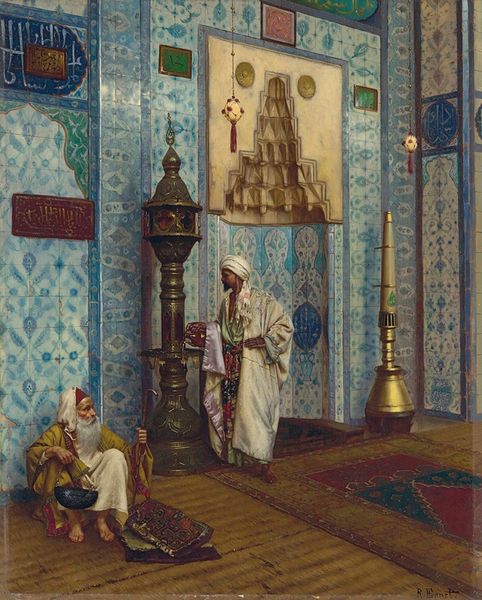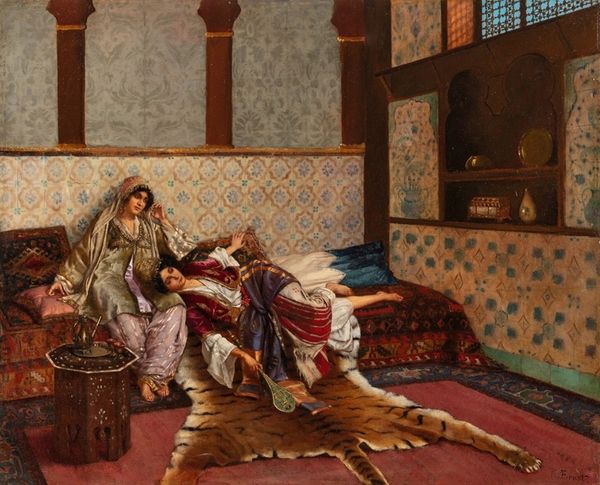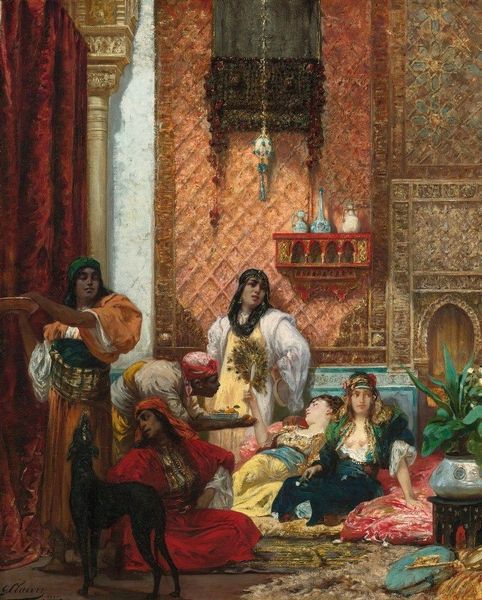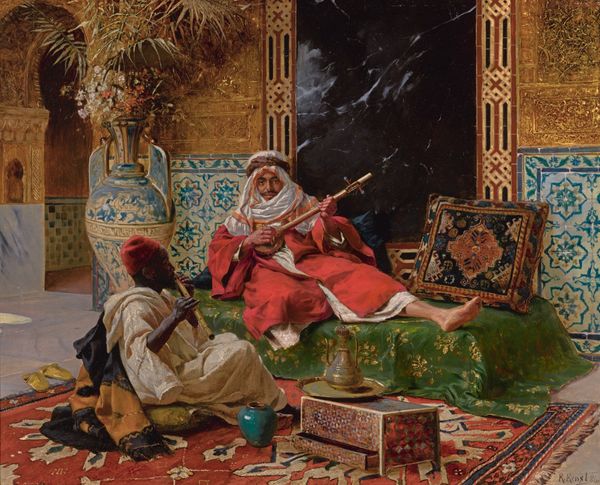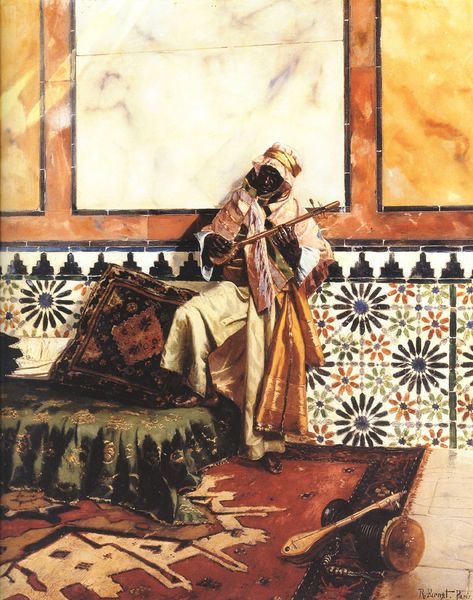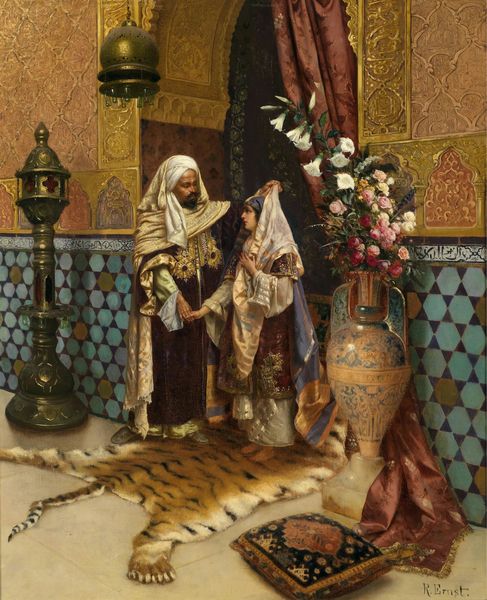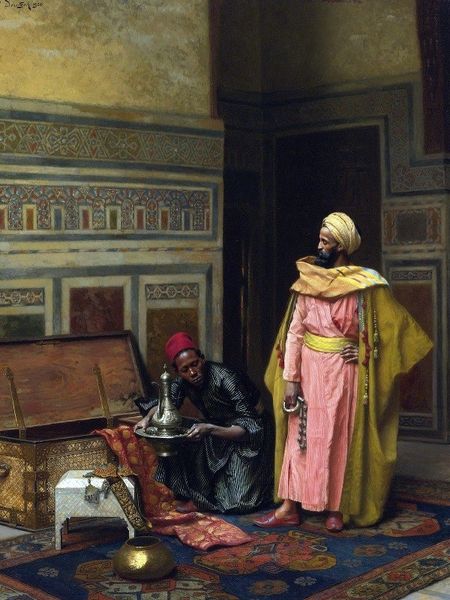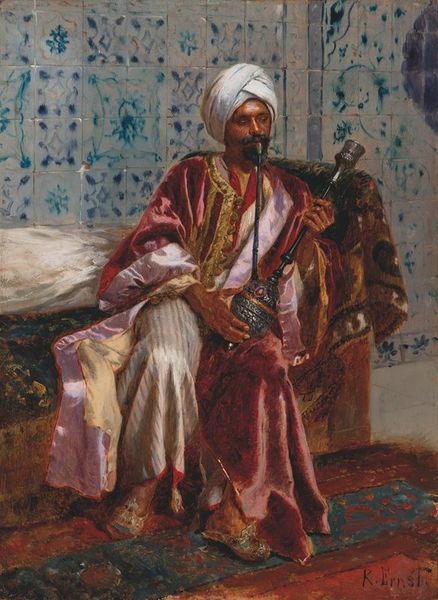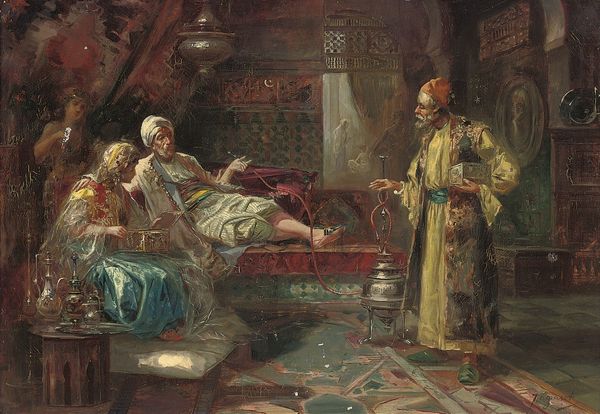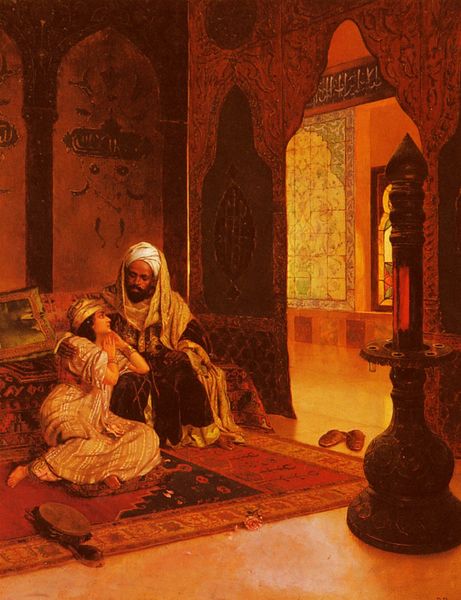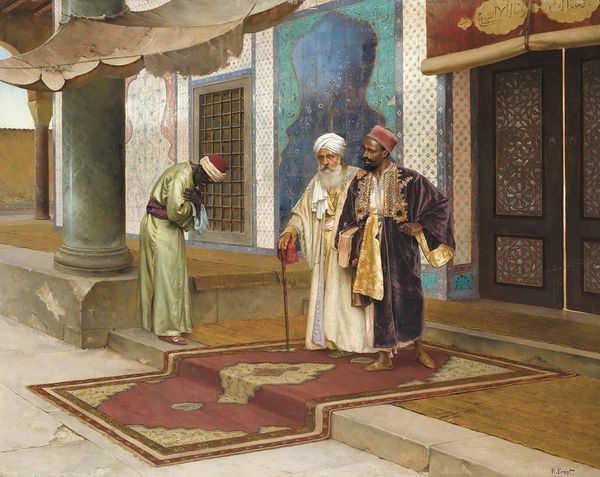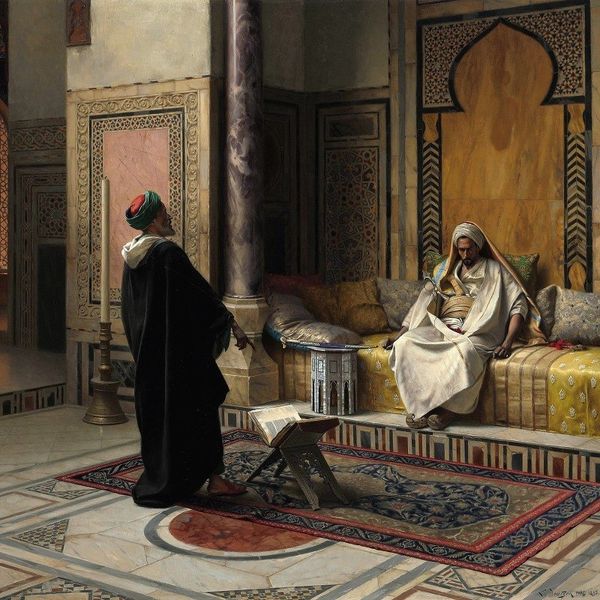
oil-paint
#
portrait
#
oil-paint
#
oil painting
#
orientalism
#
genre-painting
#
history-painting
#
realism
Copyright: Public domain
Editor: Rudolf Ernst’s "Smoking the Hookah" is a vibrant oil painting depicting a man in what appears to be an Ottoman setting. There's such an attention to detail, and the fabrics seem so opulent. What strikes me most is the composition. How do you interpret this work? Curator: Well, focusing on the materials and means of production, one must consider this through the lens of Orientalism. Ernst, as a Western European painter, is participating in a visual economy that exoticizes the East. Notice the luxurious textiles – silk, perhaps velvet? – painstakingly rendered. The materials themselves speak to trade, access, and a certain colonial power dynamic in both subject and sale. What labor went into each aspect of crafting not only the artifacts depicted but also the painting itself, and whose narratives were being overwritten? Editor: So, it’s less about appreciating the aesthetic beauty and more about understanding the… source and potential cultural impact of creating it? Curator: Precisely. We need to look critically at the raw materials: the pigments, the canvas, and even the artist’s time. Ernst, supported by a specific market demanding these "Oriental" scenes, engaged in a form of artistic production inextricably linked to a social context of unequal exchange. Are we admiring art or consumption? Editor: That gives me a totally different way to view "Smoking the Hookah.” I’d never thought to consider it that way. Thank you. Curator: It forces us to look beyond surface-level beauty and grapple with the artwork as a product of a particular time, place, and set of power relations, that extends beyond subject. Always consider the art making production line.
Comments
No comments
Be the first to comment and join the conversation on the ultimate creative platform.
